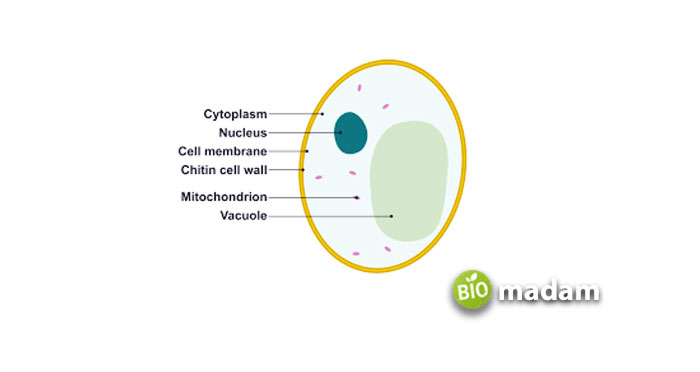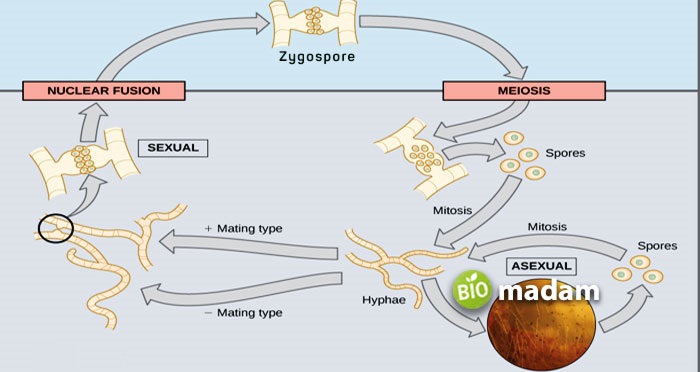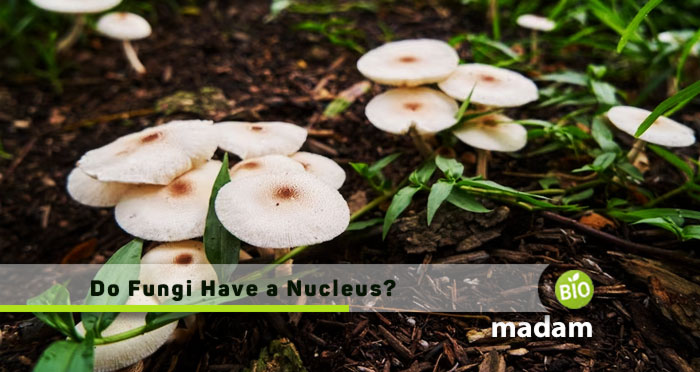Every living thing in the universe is categorized into five different kingdoms including plants, animals, fungi, protists, and monera. Fungi are eukaryotic single-celled or multi-celled microorganisms that feed on the decaying matter. They possess tangles of filaments and have different types. The most common types of fungi are molds which are multicellular filamentous and yeasts which are unicellular.
These complex species have always intrigued scientists. There have been thousands of studies about these interesting species. Fungi are not considered plants and lack chlorophyll. But for centuries many have wondered ”do fungi have a nucleus?” Fungi has a nucleus and it plays an important role in its existence. Let us dive into the details of the fungal nucleus, its unique structure, vast functions, and divisions but first let’s talk about fungi in general.
Characteristics of Fungi
The following are some general characteristics of fungi:
- The filament-like cells of fungi are called hyphae. The hyphae are either septate or aseptate.
- The total mass of cells called the hyphal mass is known as mycelium.
- Fungi are dimorphic and can change from yeast to mold form.
- Fungi have typical eukaryotic nuclei and other organelles.
- They get their nutrients from dead and decaying matter and are called saprophytes.
- The ideal temperature for the growth of fungi is 20 to 35 degrees and the ideal pH is 5.5.
- Most fungi are aerobic but some are also anaerobic. Some types of fungi are parasitic, some are symbiotic but most are pathogenic and cause several diseases.
- Fungi are unable to carry out photosynthesis due to the lack of chlorophyll.
- They have a wide range of sizes. Some are unicellular yeast; some are multicellular molds and others are macroscopic puff balls or mushrooms.
- Glycogen is the primary storage material of fungi and it is a polysaccharide.
- Fungi are known to produce useful substances such as antibiotics for example penicillin.
Do Fungi have a Nucleus?
Fungi have a proper membrane-bound nucleus, covered with a surrounding layer called a nuclear envelope. It plays a key role in the existence of the fungi. The nucleus is a rigid structure and DNA exists in a loop-like structure. It performs the processes of transcription, translation, and protein formation. The nucleus is also responsible for maintaining genetic information and performing all cellular activities.

Type of Nucleus in Fungi
Just as in different eukaryotic cells, fungal DNA is wrapped around histone proteins. Depending upon the number of nuclei present in the fungi, they can be classified as multicellular or unicellular. Fungi are also able to produce spores by mitosis to form haploid individuals.
Other Structures of Fungi
Apart from the nucleus, there are some other important structures found in the fungi. These are described as follows:
- Fungi are unicellular or multicellular eukaryotes with a filamentous structure. Most fungi have filaments except for the yeast. Read here to know how yeast helps in baking.
- The body of the fungi consists of thread-like structures called hyphae. All the hyphae form a mesh that is called mycelium.
- Fungi have a cell wall composed of chitin and polysaccharides.
- The cell wall constitutes the protoplast which is further differentiated into other cellular parts. Just beneath the cell wall lies the cell membrane that surrounds essential fungi structures, such as cytoplasm, mitochondria, endoplasmic reticulum, and nuclei.
- A nuclear membrane covers the nucleus. The nucleus is dense from the inside and contains threads of chromatin.
Key Functions of Fungal Nucleus
As we have already discussed the parts of the fungal nucleus, all of them possess specific functions described below:
Nuclear Envelope
The structure of fungal nuclei is similar to those of eukaryotes. The nucleus is an integral part of fungi as it helps in performing different cellular functions and regulates genetic information. Just like any other eukaryotic cell, the fungal nucleus is surrounded by a double-layer membrane called the nuclear envelope. It protects the nucleus and acts as a barrier. It plays an important role in separating the components of the nucleus from the cytoplasm.
Nuclear Pores
The nuclear membrane or the nuclear envelope is further divided into two membranes: outer and inner membranes. These two membranes are connected at certain points to form nuclear pores. The nuclear pores help in the exchange of materials across the nucleus and the cytoplasm. It allows the passage of proteins and RNA into the nucleus and prevents the passage of genetic information into the cytoplasm.
Chromosomes
There are multiple linear structures present inside the nucleus of fungi. These linear structures are called chromosomes and they are surrounded by proteins called histones. Chromosomes contain Deoxyribonucleic Acid (DNA) which is responsible for regulating the genetic information required for the growth, development, and functioning of the fungi.
Nucleolus
Another important structure found in the nucleus is the nucleolus. It is responsible for the synthesis and assembly of ribosomes. Ribosomes are in turn responsible for protein production. There are special regions in the nucleolus where ribosomal RNA is transcribed and processed.
Proteins and Enzymes
Furthermore, the nucleus of fungi contains various enzymes and proteins. They are responsible for several things including gene expression, DNA replication, transcription, DNA repair, and gene regulation.
All fungi have a nucleus however some have more than one nucleus in them. It varies with different types of fungi and the different stages of the fungal life cycle.

Nuclear Division in Fungi
Nuclear division in fungi occurs during cell division. It involves the replication and distribution of the fungi. There are two main ways of nuclear division. One is mitosis (asexual reproduction) and the other is meiosis (sexual reproduction).
The division of the fungal nucleus is almost the same as the division of any other organism. However, the only unique feature is that there is no breakdown of the nuclear membrane. The division and separation of the chromosomes take place within the closed and confined nucleus. The formation of the spindle fibers occurs within the nuclear envelope and chromosomes are pulled apart.
During the mitosis of any other organism, the nuclear envelope breaks just before the separation of the chromosomes. But in fungal nuclear division chromosomes remain intact inside the nucleus and do not break down.
Conclusion
Fungi are classified as separate kingdoms of living organisms. They are eukaryotic saprophytes who feed on dead and decaying matter. Just like all eukaryotic cells, fungi have a clear and dense nucleus. The fungal nucleus consists of the nuclear envelope, nuclear pores, chromosomes, nucleolus, proteins, and enzymes. The main function of nuclear fungi is to regulate genetic information and synthesize ribosomes and proteins for growth and development. The nuclear division takes place by mitosis or meiosis.

Hello, I would like to introduce myself to you! I am Chelsea Rogers, an experienced blog writer for science articles, holding an MPhil degree. My enthusiasm to grab the best knowledge, let it relate to botany, zoology, or any other science branch. Read my articles & let me wait for your words s in the comment section.

